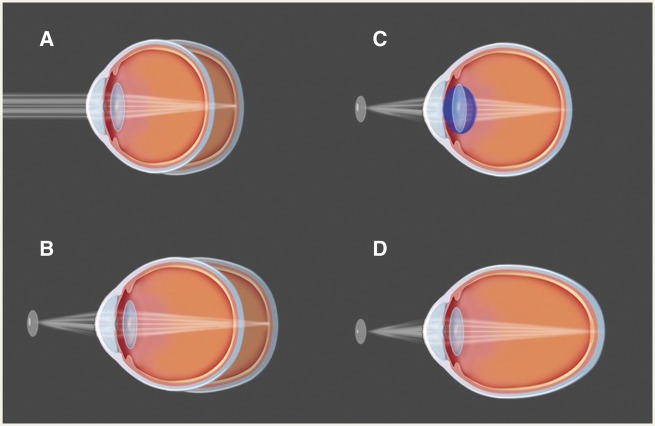进化医学:为什么近视的发病率显著增加?
IF 3.3
3区 医学
Q2 EVOLUTIONARY BIOLOGY
Evolution, Medicine, and Public Health
Pub Date : 2018-06-28
eCollection Date: 2018-01-01
DOI:10.1093/emph/eoy017
引用次数: 3
摘要
本文章由计算机程序翻译,如有差异,请以英文原文为准。

Evolutionary medicine: Why does prevalence of myopia significantly increase?
Myopia is characterized by the axial elongation of the eyeball which causes the image of distant objects to fall in front of the retina so that it cannot be brought into focus. Individuals with myopia experience blurred distant vision. Notably, high myopia significantly increases the risk of pathological ocular changes including retinal detachment, glaucoma, and myopic macular degeneration [1]. Myopia prevalence has approximately doubled in the past three decades, and it is estimated that 49.8% of the world population will develop the condition with 9.8% having severe myopia by the year 2050 [2]. Eye growth is regulated by a homeostatic control process. Human infants are born hyperopic with the eyes exhibiting gradual development from visual inputs, eventually reaching emmetropization (Fig. 1A). The majority of our human ancestors were probably slightly hypermetropic or emmetropic, and thus had clear distant vision in order to monitor environmental dangers [3]. EVOLUTIONARY PERSPECTIVES
求助全文
通过发布文献求助,成功后即可免费获取论文全文。
去求助
来源期刊

Evolution, Medicine, and Public Health
Environmental Science-Health, Toxicology and Mutagenesis
CiteScore
5.40
自引率
2.70%
发文量
37
审稿时长
8 weeks
期刊介绍:
About the Journal
Founded by Stephen Stearns in 2013, Evolution, Medicine, and Public Health is an open access journal that publishes original, rigorous applications of evolutionary science to issues in medicine and public health. It aims to connect evolutionary biology with the health sciences to produce insights that may reduce suffering and save lives. Because evolutionary biology is a basic science that reaches across many disciplines, this journal is open to contributions on a broad range of topics.
 求助内容:
求助内容: 应助结果提醒方式:
应助结果提醒方式:


